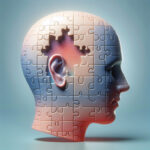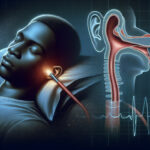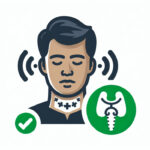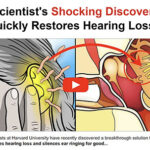This 30 Second Technique is Shockingly Effective
Breaking Down Barriers: Coping Strategies for Ear Pain and Hearing Loss

Understanding Ear Pain and Hearing Loss: An Introduction
Defining Ear Pain and Hearing Loss: Ear pain and hearing loss are two conditions that can significantly impact an individual's quality of life. Ear pain, also known as otalgia, can range from a mild discomfort to a severe, debilitating condition. Hearing loss, on the other hand, can be a partial or total inability to hear. Both conditions may occur together or independently and can arise from various causes, from infections to genetic factors.
Common Causes of Ear Pain and Associated Hearing Loss: The causes of ear pain and hearing loss are diverse. They can include ear infections, wax build-up, trauma, exposure to loud noises, and age-related degeneration. Other less common causes are diseases such as Meniere's disease or tumors. Sometimes, the pain might not originate in the ear itself but could be referred pain from dental issues or throat infections.
The Psychological Impact of Ear-Related Health Issues: Suffering from ear pain and hearing loss can take a toll on a person's mental health. The discomfort and communication barriers can lead to feelings of frustration, isolation, and depression. It becomes essential for individuals to recognize these psychological impacts and seek appropriate support while dealing with the physical symptoms of their conditions.
Diagnosis and Professional Care for Ear Pain and Hearing Loss
The Role of Audiologists and ENT Specialists: For those experiencing ear pain and hearing loss, audiologists and ENT (ear, nose, and throat) specialists are the go-to professionals. Audiologists specialize in the non-medical management of hearing disorders, while ENT specialists can provide a full range of medical and surgical treatments for ear conditions. Both can guide patients through the diagnostic and treatment processes.
Tests and Procedures for Diagnosing Ear Pain and Hearing Loss: Diagnosing these conditions typically involves a variety of tests and procedures. These can include otoscopic exams, audiometric tests (like hearing tests), and imaging studies such as CT scans or MRIs. These diagnostic tools help professionals determine the underlying causes of ear pain and the degree of hearing loss, vital for effective treatment planning.
Understanding Your Diagnosis: Types and Degrees of Hearing Loss: Hearing loss can be classified into different types, such as sensorineural, conductive, or mixed, and it can vary in degree from mild to profound. Understanding the nature of your hearing loss is critical to finding the right treatment and coping strategies to maintain a high quality of life.
Treatment Options for Ear Pain and Hearing Loss
Medications and Therapies for Managing Ear Pain: Medical treatment for ear pain might include pain relievers, antibiotics for infections, or steroid treatments for inflammatory conditions. It's important to follow a healthcare provider's advice for the use of medications and therapies. For some chronic conditions, physical therapy or alternative therapies such as acupuncture might be recommended.
Hearing Aids and Assistive Devices for Hearing Loss: For many with hearing loss, hearing aids and other assistive listening devices can be life-changing. These devices amplify sounds and improve communication abilities. The market offers a wide range of options, from behind-the-ear aids to completely in-the-canal devices, catering to different preferences and levels of hearing loss.
Surgical Interventions for Ear Pain and Hearing Loss: Surgical options may be available for certain types of ear pain and hearing loss. Procedures like tympanoplasty to repair a perforated eardrum, or cochlear implants for severe sensorineural hearing loss, can restore or significantly improve hearing in appropriate candidates.
Lifestyle Adjustments to Manage Ear Pain and Hearing Loss
Home Remedies and Pain Management Techniques: Managing ear pain at home can involve the use of warm compresses, over-the-counter pain relievers, or drops to soften wax. Simple techniques, such as avoiding water in the ear or chewing gum during altitude changes, can also alleviate pain.
Protecting Your Ears: Preventive Measures and Daily Habits: Prevention is key in managing ear health. Protecting your ears from loud noises with earplugs or earmuffs, maintaining good ear hygiene, and avoiding the insertion of foreign objects can prevent both ear pain and potential hearing loss.
Communicating Effectively With Hearing Loss: Effective communication strategies are essential for those with hearing loss. This can include learning to lip read, choosing favorable seating in noisy environments, and using technology such as captioned telephones or smartphone apps that convert speech to text.
Coping Mechanisms for Emotional Well-being
The Importance of Mental Health Support: It’s crucial to acknowledge the mental health component when coping with ear pain and hearing loss. Seeking support from mental health professionals, discussing your feelings with trusted individuals, or practicing mindfulness can provide relief from the emotional challenges associated with these conditions.
Joining Support Groups and Finding Community: Support groups can offer a sense of community and understanding that is invaluable. Sharing experiences and coping strategies with others who have similar challenges can alleviate feelings of isolation and provide practical advice for living with ear pain and hearing loss.
Strategies for Overcoming Social Isolation and Depression: To combat social isolation and depression, staying connected with friends and family is vital. Pursuing hobbies, volunteering, or participating in community activities can also help build a supportive network and enhance emotional well-being.
Navigating the Workplace With Ear Pain and Hearing Loss
Seeking Accommodations: Your Rights and Responsibilities: Understanding your legal rights is important when addressing ear pain and hearing loss in the workplace. Many countries have laws that require employers to provide reasonable accommodations for employees with disabilities. It’s your responsibility to communicate your needs and work with your employer to find suitable solutions.
Assistive Technologies for Professional Environments: A range of assistive technologies can facilitate communication and productivity at work. This includes amplified phones, hearing loop systems, and speech-to-text software. Embracing these tools can help maintain job performance and ease daily work activities.
Tips for Effective Communication in the Workplace: Clear communication is key in any professional setting, but it can be more challenging with hearing loss. Tips for effective communication include facing the speaker, minimizing background noise, and not hesitating to ask for information to be repeated or written down if necessary.
Technology and Innovation in Hearing Loss Management
Latest Developments in Hearing Aid Technology: Hearing aid technology is advancing rapidly. Modern hearing aids are smaller, more powerful, and often come with features such as Bluetooth connectivity and directional microphones, which improve the listening experience in various environments.
Mobile Apps and Tools for Those with Hearing Loss: An array of mobile apps and tools are available to assist those with hearing loss. These include apps that provide real-time captioning, hearing tests, and sound amplification. These tools can enhance everyday communication and accessibility for individuals with hearing challenges.
The Future of Treatment: Advances in Medical Research: Medical research is continuously seeking new treatments for ear pain and hearing loss. Developments such as gene therapy, stem cell research, and new drug discoveries hold promise for future generations to enjoy better hearing and pain management solutions.
Conclusion: Empowerment Through Knowledge and Support
Recap of Coping Strategies for Ear Pain and Hearing Loss: We've discussed a variety of coping strategies, from medical interventions and assistive devices to lifestyle adjustments and mental health support. Implementing these strategies can help individuals manage their conditions effectively.
The Importance of Advocacy and Continued Education: Advocacy for oneself and continued education about ear health are essential for empowerment. Staying informed about the latest treatments and technologies enables individuals to make the best decisions for their health and well-being.
Final Thoughts on Living a Fulfilling Life with Hearing Challenges: Despite the challenges that ear pain and hearing loss present, it is entirely possible to live a fulfilling life. With the right support, treatment, and coping strategies, individuals can overcome barriers and enjoy rich, rewarding experiences.

Laura Henderson is a health enthusiast and has been interested in healthy and natural methods of eliminating tinnitus and restoring natural hearing for many years.










